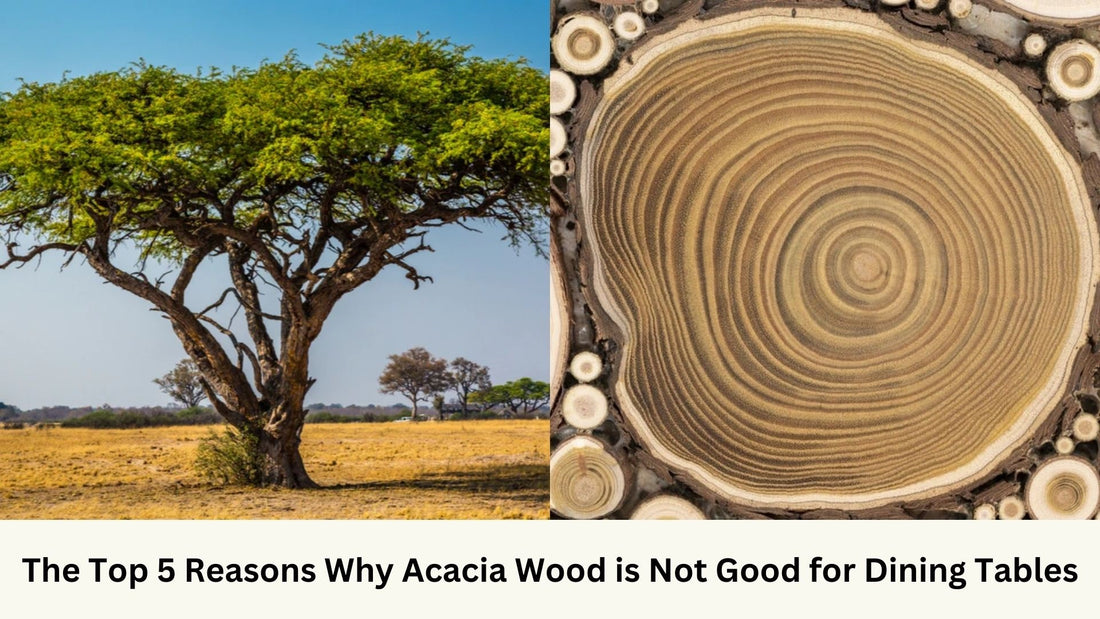
The Top 5 Reasons Why Acacia Wood is Not Good for Dining Tables
Share
Acacia wood has gained popularity in recent years for its durability and natural beauty. However, when it comes to dining tables, there are several reasons why acacia wood may not be the best choice. In this blog post, we will explore the top 5 reasons why acacia wood is not good for dining tables.
1. Prone to Scratches
Acacia wood is relatively soft compared to other hardwoods, making it more susceptible to scratches and dents. This is especially problematic for dining tables, which are prone to daily wear and tear.
2. Susceptible to Water Damage
Acacia wood is not naturally water-resistant and can easily absorb moisture. This makes it vulnerable to water damage, such as warping and swelling, when exposed to spills or high humidity levels in the dining area.
3. Prone to Stains
Due to its porous nature, acacia wood is prone to staining. Even with regular sealing and maintenance, it can be challenging to prevent stains from food, beverages, and other common dining table spills.
4. Lack of Heat Resistance
Acacia wood is not highly heat resistant, which can be problematic for dining tables. Placing hot dishes or pots directly on the surface can cause burn marks or discoloration, compromising the overall appearance of the table.
5. Limited Durability
While acacia wood is known for its durability, it is not as resilient as other hardwoods commonly used for dining tables, such as oak or walnut. Over time, the surface may show signs of wear and tear more quickly.
While acacia wood has its merits, it is important to carefully consider the specific requirements and priorities when choosing a dining table material. Exploring alternative options may provide a more suitable and long-lasting solution for your dining area.
